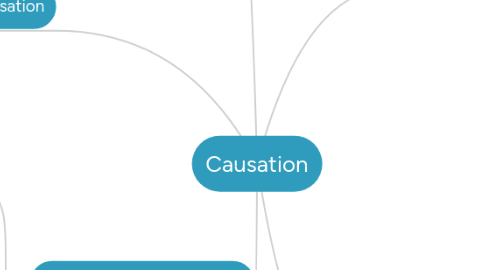Causation
by Anna Bromely


1. Neccessary and sufficient conditions
1.1. Various attempts of reductive analysis. Technical terms: 1.Logically necessary/sufficient conditions 2. Causally necessary and sufficient conditions 3. Humean necessary and sufficient conditions
1.2. Problems with the Neo-humean theory as set out by Edgington include the problem of effects, Epiphenomena and pre-empted potential causation.
2. Causation
2.1. So how do we comprehend the nature of causation? Kant - a set of general, pervasive, ultimately irreducible concepts which form structures Hume - dismantle the concept into more basic experiential constituents. Metaphor of the brick wall. We can see unconnected events which go regularly together. Cement brought into the picture as a binding glue which is a something else of the objects binded. Notion of causation and observation - feeling force of the wind, impact of collision, cover paper with marks of pen, bringing about changes as we rearrange furniture.
3. Causation and regularity
3.1. Regularity theory is compelling as otherwise we have to purport that causation involves a necessary connection. This connection lies beyond the limits of our possible experience and knowledge.
3.2. But regularity is not held without contention - there are causal sequences that are not instances of regularity e.g. the big bang, WW1, others?
3.3. For the regularity theorist, causation is just an instance of regularity. This takes away the mystery. We can latch onto knowledge by discerning regularities in nature.
3.4. Jargon: We try to ascertain the necessary and sufficient conditions of the correct application of the concept (JTB) Under knowledge sits justification and justified true belief. Breaking components down to its basic components (atoms of analysis). The analytic style is a reductive approach rather than a holistic, connected one like in continental philosophy.
3.4.1. Introduction - why are you writing about this?
3.4.2. Subhead 1
3.4.3. Subhead 2
3.4.4. Subhead 3
3.4.5. Conclusion - what summarizes what is most interesting about your topic?
4. Causation
4.1. Fundamental to how we think about the world; specifically to the changes and processes which are operative.
4.2. A kind of engine that runs through reality. However Strawson in his book 'The Secret Connection' thinks there is no engine running through reality - The cement of the universe consists in nothing over and above the dependant connections of separable events. We are ignorant of the secret connection that binds them together.
4.3. There are 3 positions we might adopt with respect to a particular causal sequence: 1. Anti-realism - 1 event succeeds another. No necessity relating events to each other 2. Sceptical realism - We can assert that nexus exists but can have no proper conception of what this binding necessity consists in. I.e. cement is unknowable to us 3. Naive realism - Causal relations carry objective necessitation. Science or common sense can tell us what this nexus depends on.
4.3.1. Inspire someone about your topic?
4.3.2. Specific grade?
4.3.3. Do your best work?
